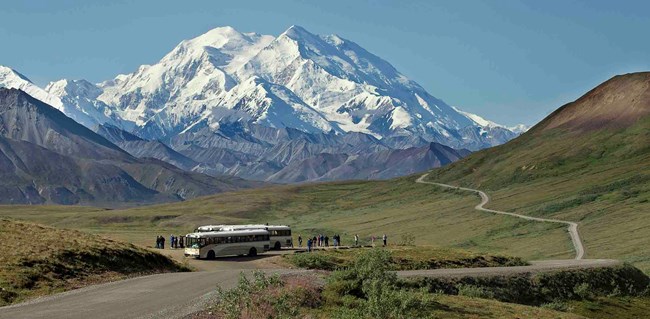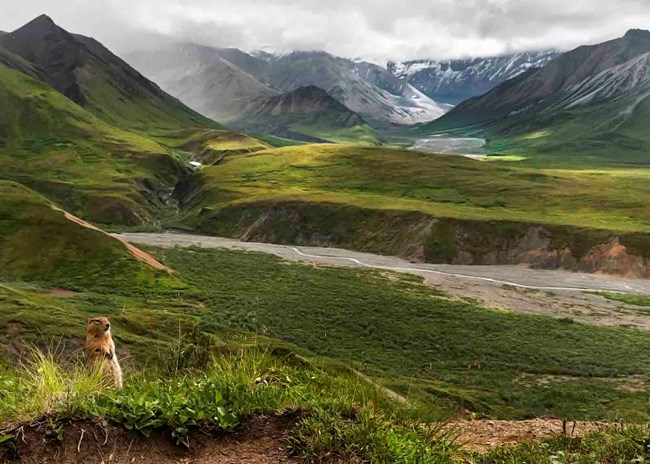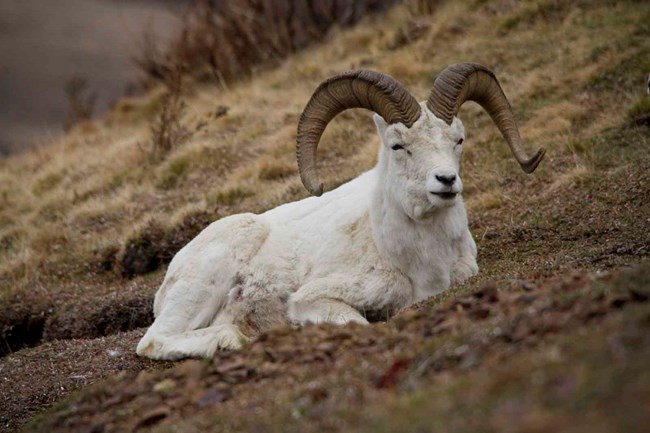
NPS/Jacob W. Frank
Denali National Park and Preserve covers 2.4 million hectares (6 million acres), most of it only accessible by foot, dogsled, or aircraft. One road provides vehicular access, mainly during the summer season. The landscape is not static, as landslides, braided rivers of glacial melt, and moving glaciers attest. There are also human impacts on the land, such as changes in air quality (airborne contaminants) and climate.
Near the geographic center of Alaska, the park surrounds Mt. McKinley (formerly Denali), which hinges the great arc of the Alaska Range mountains. The Alaska Range is a barrier to air movements and precipitation from maritime influences to the south, thus creating a transitional climate. Areas on the south side of the range are significantly wetter, with twice the precipitation of the north side. Temperatures on the south side of the range have less variation and tend to be warmer in winter and cooler in summer, due to more maritime influences. North of the Alaska Range, a continental climate prevails.

NPS/Tim Rains
Denali’s vegetation is characteristic of subarctic areas where the growing season is less than 100 days and soils are nutrient-poor. The taiga, or boreal forest, is found at the lowest elevations and consists of black spruce with stands of white spruce, paper birch, and aspen on better-drained sites. Understory vegetation consists of low shrubs, herbs, mosses, and lichens. Tree line is encountered at nearly 800 m (2,600 ft.) and forests give way to shrublands consisting of moist tundra plants such as dwarf birch, willows, and sedges. Above 1,000 m (3,400 ft.), shrubland is replaced by alpine tundra.

NPS/Jacob W. Frank
Denali was created originally (as Mt. McKinley National Park) in 1917, mainly because of its wildlife resources. In the early years, scientific interest in Denali centered on the large mammals because the park’s status as a game refuge offered scientists the unique opportunity to study the life histories of animal populations over a significantly large range of the subarctic. Denali is well known for its diversity of wildlife. Based on current information, there are ten species of fish, one amphibian, 37 species of mammals, and 167 species of birds known in the park. There are an unknown number of species of invertebrates.
Denali is a designated as an International Biosphere Reserve under the United Nations Educational and Scientific and Cultural Organization Man and the Biosphere Program. The purposes of biosphere reserves are to assure worldwide protected areas where long-term ecological research will be possible on natural processes to compare with human altered areas and to assure protection of genetic diversity.
What's Happening in Denali National Park and Preserve
Last updated: February 26, 2025
